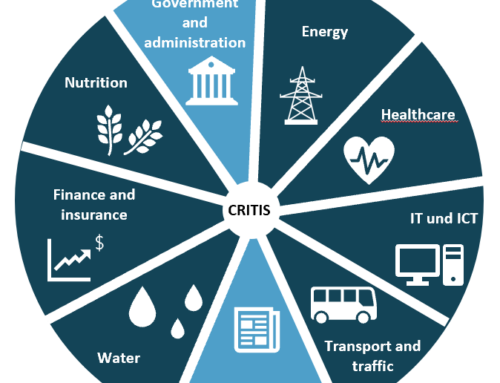The Love Parade in Düsseldorf, tragedies in Mecca, 9/11 and, as the latest example, the Lag Baomer festival at Meron Mountain in Israel. The media quickly speak of a mass panic when many people come together, there are bottlenecks or obstacles and the need to regain freedom of breath and movement or people feel a strong fear and try to flee from a situation. All this is mostly in combination with injured or even dead people.
In Meron, there was talk of mass panic quickly after the incident occurred. During the celebration at the sanctuary of Mount Meron, 45 people died and quite a few were injured. This is the largest civil disaster in the history of Israel. According to initial findings, the disaster was triggered by a situation on a sloping ramp where people started to fall. Due to the density, a kind of domino effect was created and people fell on top of each other. Eyewitnesses report an “avalanche of people”. The media reported an outbreak of panic, people who had no means of escape because, among other things, emergency doors could not be opened. Due to the pressure of the crowds, people were crushed, fell and were killed by people running above them.Children were separated from their parents in the crowds, the mobile network was overloaded as many tried to reach their relatives. Thousands of emergency personnel were already on the scene to secure the festival, and a mobile hospital was set up nearby.
But what is a mass panic anyway? What circumstances favor it and is it possible to prevent a mass panic from occurring?
In science, there are various attempts to define a mass panic, but there is currently no universal definition. However, scientists agree on the key points. A mass panic is described as a state of intense fear that exists among many people and spreads through panic contagion. It is an irrationally triggered, catastrophic and above all mindless fleeing with reckless behavior. If the event is real, a mass exodus usually occurs beforehand. This mass exodus can turn into a mass panic due to factors such as intense stimuli, a panic mood existing in advance or a time criticality that an escape is immediately necessary. A MANV, i.e. a mass casualty incident, is also possible in a mass exodus without a mass panic having occurred.
What is the difference between a mass exodus and a mass panic?
The main difference is in the behavior of the people and in the event itself.
A mass panic is based on a real event, but the contagion also occurs on people who have not had a personal confrontation with the fear trigger. What exactly the event can be is not defined. Examples can be a collapsing grandstand, as was the initial assumption in Meron. But also a fire, an explosion or (supposed) gunshots can be the trigger for tremendous reflexive actions, which can shake the whole personality and also lead to panic paralysis. The consequence: the human being is only capable of primitive reactions, which are in the reflex layer. A rational or even social behavior is just as impossible as the intake of further information. Behavioral patterns spread in the group and a reckless, partly aggressive and egoistic flight reaction follows.This behavior is often associated with a high emotional attachment to the event.
Mass flight, on the other hand, is a rational behavior of a crowd of people. Due to a real event or a real threat perception, people want to flee as quickly as possible from the confinement and / or the area of danger. The decision to move away from the source of danger is made consciously. In doing so, people are capable of taking in further information and repeatedly assessing the situation. It is therefore possible to react to crisis communication and behavioral instructions, and instructions get through to people and can therefore be followed. Fleeing from a dangerous situation is a very rational behavior. And extending elbows to give oneself room to breathe in a restrictive situation is also a rational action. In this case, selfish and antisocial behavior occurs rather rarely. It can be observed that in a mass exodus, one’s own chance to escape is partially diminished in order to help other people. In studying the events of 9/11, researchers have found that there was not a mass panic there at all but a mass exodus from the World Trade Centers. The behavior of the individuals was mainly rational. Colleagues were assisted to safety who would not have been able to do so on their own. The flight across the Brooklyn Bridge from Manhattan also did not have the characteristics of a mass panic; here, the media also occasionally spoke of a mass exodus.
Why is the term mass panic used more often than the neutral term mass exodus?
One of the reasons is the lack of clarity about how to differentiate the terms. In some media, they are understood as synonyms for each other and are used accordingly. The fact that a mass exodus can turn into a mass panic if conditions such as panic readiness or a high emotional charge are present also makes it more difficult to differentiate. When people flee in fear and are injured or even killed, many assume that it is a mass panic. However, a mass exodus can also result in an MANV. The extent of the damage has no influence on the definition of the term, only the behavior of the people among themselves determines the correct term. If there is antisocial behavior, it is natural to assume that there will be more casualties than if people help each other and pay attention to their surroundings. Another reason lies in the nature of media coverage. Particularly in tabloid newspapers, which are looking for a story that will sell, terms are used that are sensationalistic. A rational storyline will not bring a sales hit. Furthermore, the term mass exodus has a political ring to it. Thus, it tends to be used to refer to escapes from war zones or crisis areas, and because of the quick escape in a short time, the term panic is used to refer to escapes from a stadium or a building. Even if the criteria of a panic are not met.
How can mass panic be prevented?
To prevent panic from occurring in the case of an incident, people should be prevented from being placed in a narrowing situation. This can be achieved by structural measures such as rows of trees or the avoidance of pinholes. Organizationally, pinholes can also be prevented by strategic placement of, for example, entry controls. Guidance systems can be used to make it clear to people how they can get out of the building / facility as quickly as possible to ensure that, in the event of large crowds, all emergency exits are seen and are thus equally used to capacity. Public announcement systems can be used to communicate with people in a more timely manner. Lack of information can lead to wrong conclusions being drawn or, due to short visibility distances and tunnel vision, alternative escape routes not being perceived, which leads to further congestion. It has proven effective during major events to place evacuation or fire safety helpers within the areas where many people are present. They can better direct the masses in the event of an emerging mass exodus and calm them down, especially through their presence. Other organizational measures can also be taken. Awareness training and seminars can ensure that people are confident in their own behavior in the event of an incident. Fire drills and evacuation drills are particularly well known and often already established. The same concept can be used for other incidents, so that employees know the shortest way out and what to look out for.
This will prevent the formation of pinholes or overlooking emergency exits as common routes are reverted to.
Do you need assistance in conducting a drill or creating an awareness concept? Contact us and get prepared with us!






